#sustainable timber homes
Link
Responsible Wood contributes to achieving the SDGs to unlock the full potential of forests for a sustainable world.
#sustainable outdoor furniture australia#eco friendly furniture materials#sustainable timber furniture australia#sustainable office furniture#eco friendly furniture#sustainable furniture sydney#sustainable timber homes
0 notes
Text







Gardenhide Studio, London - Commonbond Architects
#Commonbond Architects#architecture#design#building#modern architecture#interiors#minimal#house#modern#hempcrete#sustainability#eco#green architecture#timber frame#studio#garden studio#home office#home office setup#wood stove#light#bright#windows#kitchen#office#living room#garden#london#cool architecture#beautiful design#architecture blog
132 notes
·
View notes
Text
5 Surprising Benefits of Jaks Timber Recycled Timber Flooring
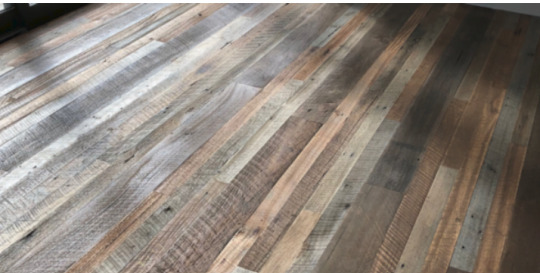
Thinking about upgrading your flooring? Consider Jaks Timber Recycled Timber Flooring for a sustainable and stylish choice. Here are five compelling reasons why:
Eco-Friendly Choice: Jaks Timber Recycled Timber Flooring is an environmentally responsible option. By utilizing recycled timber, it reduces the demand for new timber resources, helping to preserve forests and wildlife habitats. Choosing recycled timber also minimizes the amount of waste sent to landfills, promoting a circular economy and reducing carbon emissions associated with traditional flooring materials.
Unique Aesthetic Appeal: Each plank of Jaks Timber Recycled Timber Flooring boasts a distinct character and history. The natural variations in color, texture, and grain patterns add charm and uniqueness to your space. Whether you prefer a rustic, weathered look or a sleek, modern finish, recycled timber flooring offers endless design possibilities to complement any interior style.
Durability and Longevity: Despite being recycled, Jaks Timber Recycled Timber Flooring doesn't compromise on quality. Recycled timber undergoes a meticulous process of cleaning, refurbishing, and finishing to ensure durability and resilience. With proper care and maintenance, your recycled timber flooring can withstand heavy foot traffic and last for generations, making it a wise investment for your home or business.
Healthier Indoor Environment: Unlike some synthetic flooring materials that emit harmful chemicals known as volatile organic compounds (VOCs), Jaks Timber Recycled Timber Flooring is a natural and non-toxic choice. It contributes to better indoor air quality, creating a healthier living or working environment for you and your family. Say goodbye to concerns about off-gassing and hello to a space that promotes well-being.
Adds Value to Your Property: Installing Jaks Timber Recycled Timber Flooring can enhance the value and appeal of your property. Its sustainability credentials and timeless beauty appeal to eco-conscious buyers and design enthusiasts alike. Whether you're renovating for resale or simply upgrading your home, recycled timber flooring can increase the marketability and desirability of your space, potentially yielding a higher return on investment.
In conclusion, Jaks Timber Recycled Timber Flooring offers a winning combination of sustainability, style, durability, and value. Make the eco-friendly choice without compromising on aesthetics or performance. Experience the beauty and benefits of recycled timber flooring in your home or business today.
For More Information
Website : https://jakstimber.com.au/products/flooring/recycled-flooring/
Email ID : [email protected]
Phone Number : 0488 029 108
#Sustainable flooring options#Reclaimed wood flooring#Eco-friendly home renovations#Timber flooring benefits#Green building materials
0 notes
Text
Unlocking Comfort: A Guide to Wood Frame House Insulation

When it comes to creating a cozy and energy-efficient home, insulation is key. For wood frame houses, choosing the right insulation solution is crucial to maintain comfort levels and keep energy costs in check. In this comprehensive guide, we'll explore everything you need to know about Wood Frame House Insulation, from understanding its importance to selecting the best materials for your home.
Understanding the Essence of Insulation
Imagine insulation as the cozy blanket that wraps around your house, keeping warmth in during winter and heat out during summer. Without proper insulation, your home would be like a leaky bucket, constantly losing precious energy and causing discomfort. But with the right insulation, you can create a snug haven where temperature fluctuations are minimized, and energy bills are kept at bay.
Why Does Insulation Matter?
Insulation is not just about staying warm in winter; it's also about staying cool in summer. It acts as a barrier against heat transfer, helping maintain a comfortable indoor temperature year-round. Moreover, insulation plays a crucial role in soundproofing, reducing noise from outside and enhancing the tranquility of your home.
Factors to Consider
Before diving into specific insulation options, let's consider some important factors:
R-Value: This measures the insulation's thermal resistance. The higher the R-value, the better the insulation's ability to resist heat flow. Aim for insulation with an optimal R-value to maximize energy efficiency.
Moisture Control: Wood frame houses are susceptible to moisture buildup, which can lead to mold and rot. Choose insulation materials that effectively manage moisture to protect your home's structural integrity.
Environmental Impact: Sustainable building practices are gaining traction. Look for insulation options that are eco-friendly and minimize environmental impact.
Installation Ease: Consider your DIY skills and whether you'll require professional assistance for installation. Some insulation materials are easier to install than others.
Exploring Insulation Options
Now that we've covered the basics, let's delve into the various insulation options suitable for wood frame houses:
1. Fiberglass Insulation
Description: Fiberglass insulation consists of tiny glass fibers and is available in batts or rolls. It's one of the most common and budget-friendly insulation options.
Benefits:
Affordability: Fiberglass insulation is cost-effective and readily available.
DIY-Friendly: Installation is relatively easy, making it suitable for DIY enthusiasts.
Versatility: Can be used in walls, floors, and attics to provide thermal insulation.
Considerations:
Moisture Management: Requires proper installation and vapor barriers to prevent moisture buildup.
Skin Irritation: Handling fiberglass insulation may cause skin irritation, requiring protective gear.
2. Spray Foam Insulation
Description: Spray foam insulation expands upon application, filling gaps and crevices effectively. It provides superior thermal insulation and air sealing properties.
Benefits:
High R-Value: Offers excellent thermal performance, minimizing heat loss or gain.
Air Sealing: Seals gaps and cracks, reducing air leakage and enhancing energy efficiency.
Moisture Resistance: Helps prevent moisture infiltration, reducing the risk of mold and rot.
Considerations:
Cost: Spray foam insulation tends to be more expensive than other options.
Professional Installation: Due to its application technique, it's typically installed by professionals.
3. Cellulose Insulation
Description: Made from recycled paper treated with fire retardants, cellulose insulation is an eco-friendly option. It's blown into cavities or installed as loose fill.
Benefits:
Sustainability: Made from recycled materials, reducing environmental impact.
Fire Resistance: Treated with fire retardants for added safety.
Soundproofing: Provides effective sound insulation, reducing noise from outside.
Considerations:
Moisture Sensitivity: Requires proper installation and moisture barriers to prevent issues.
Settling: May settle over time, requiring periodic checks and top-ups.
Making an Informed Decision
With a plethora of insulation options available, how do you choose the right one for your wood frame house? Consider the following:
Budget: Determine your budget and prioritize insulation options that offer the best value for money.
Performance: Evaluate the insulation's thermal performance, moisture resistance, and soundproofing capabilities.
Environmental Impact: Opt for eco-friendly insulation materials that align with your sustainability goals.
Long-Term Benefits: Look beyond upfront costs and consider the long-term savings and comfort provided by high-quality insulation.
youtube
Conclusion: Embracing Comfort and Efficiency
In conclusion, insulation is the unsung hero of every wood frame house, ensuring comfort, energy efficiency, and structural integrity. By understanding the importance of insulation and exploring the available options, you can make informed decisions that enhance your home's livability and sustainability. Whether you choose fiberglass, spray foam, cellulose, or a combination thereof, investing in quality insulation is an investment in the comfort and well-being of your family for years to come.
#Visit timberframeinsulation.co.uk#Insulation Solutions for Timber Homes#Professional Timber Frame Insulation#Sustainable Home Insulation#Expert Timber Frame Solutions#Upgrade Your Timber Home Insulation#Youtube
1 note
·
View note
Text
Urban Woodshed

Website: https://www.urbanwoodshed.com
Address: Saskatoon, Saskatchewan, Canada
Urban Woodshed specializes in creating unique, handmade home décor items. The company's products, often crafted from repurposed materials like whiskey barrels and locally harvested timber, offer a blend of sustainability and style. They cater to those looking to add a touch of warmth and individuality to their living spaces.
Facebook: https://www.facebook.com/urbanwoodshed/
Instagram: https://www.instagram.com/woodshedurban
Keywords:
rustic home accents
whiskey barrel furniture
sustainable home accessories
nature inspired home accessories
nature inspired interior design
creative home solutions
personalized home accessories
handcrafted wooden products
eco conscious interior design
handmade home decor
repurposed material furnishings
custom decor pieces
whiskey barrel creations
local timber products
unique home styling
eco friendly dcor solutions
artisan crafted home items
bespoke wooden dcor
sustainable living dcor
eco conscious home styling
unique interior decorations
artisanal home furnishings
locally sourced dcor
handmade wooden accents
reclaimed wood home dcor
custom designed furnishings
sustainable living accents
eco friendly home styling
local craftsmanship dcor
unique sustainable furnishings
repurposed wood creations
custom made home accents
artisan designed home items
wooden dcor craftsmanship
sustainable living accessories
whiskey barrel home pieces
nature themed home styling
local artisans home goods
handcrafted sustainable items
reclaimed timber home accessories
bespoke sustainable furnishings
artisanal woodwork for homes
locally crafted interior dcor
creative wooden home solutions
eco friendly custom designs
rustic handmade home items
personalized sustainable living
whiskey barrel home accents
nature inspired custom pieces
saskatoon handmade home dcor
sustainable home accessories in saskatchewan
repurposed material furnishings saskatoon
custom decor pieces saskatchewan
whiskey barrel creations in saskatoon
local timber products saskatchewan
unique home styling saskatoon
eco friendly dcor solutions in saskatchewan
artisan crafted home items saskatoon
rustic home accents saskatchewan
bespoke wooden dcor saskatoon
personalized home accessories in saskatchewan
sustainable living dcor saskatoon
eco conscious home styling in saskatchewan
unique interior decorations saskatoon
handcrafted wooden products saskatchewan
creative home solutions in saskatoon
artisanal home furnishings saskatchewan
locally sourced dcor saskatoon
nature inspired home accessories in saskatchewan
handmade home dcor near me
sustainable home accessories near me
repurposed material furnishings near me
custom decor pieces near me
whiskey barrel creations near me
local timber products near me
unique home styling near me
eco friendly dcor solutions near me
artisan crafted home items near me
rustic home accents near me
bespoke wooden dcor near me
personalized home accessories near me
sustainable living dcor near me
eco conscious home styling near me
unique interior decorations near me
handcrafted wooden products near me
creative home solutions near me
artisanal home furnishings near me
locally sourced dcor near me
nature inspired home accessories near me
#rustic home accents#whiskey barrel furniture#sustainable home accessories#nature inspired home accessories#nature inspired interior design#creative home solutions#personalized home accessories#handcrafted wooden products#eco conscious interior design#handmade home decor#repurposed material furnishings#custom decor pieces#whiskey barrel creations#local timber products#unique home styling#eco friendly dcor solutions#artisan crafted home items#bespoke wooden dcor#sustainable living dcor#eco conscious home styling#unique interior decorations#artisanal home furnishings#locally sourced dcor#handmade wooden accents#reclaimed wood home dcor#custom designed furnishings#sustainable living accents#eco friendly home styling#local craftsmanship dcor#unique sustainable furnishings
1 note
·
View note
Photo

Wiltshire Tile Roofing
Example of a mid-sized trendy multicolored two-story wood exterior home design with a tile roof
0 notes
Photo

Hamilton Concrete
Inspiration for a shed roof remodel on a mid-sized contemporary beige one-story concrete exterior home
#sustainable threads#modern contemporary home#environmentally friendly materials#light and spacious#timber linings#solar heating
0 notes
Photo

Exterior - Contemporary Exterior
Mid-sized contemporary gray one-story concrete exterior home idea with a metal roof
0 notes
Photo

Exterior - Contemporary Exterior
Mid-sized contemporary gray one-story concrete exterior home idea with a metal roof
0 notes
Text
I’m sure everyone remembers the article from 2020 where researches found three-ply cordage made by Neanderthals.^
But did you know that in the supplemental material for the article, it mentions that pine needles can be made into textiles?^^ As someone who works with textiles myself, I had come across pine needles as a dye stuff, but not as a fibre.
The source is listed as "L’acquisition des matières textiles d’origine végétale en Préhistoire" by Fabinne Médard. It talks about how other fibres, including brambles and broom could have been used prehistorically for a similar purpose, as well as flax. However, it contains only one metion of pine needles.
“Les aiguilles du pin sylvestre (Pinus sylvestris L.) fournissaient, après rouissage, une matière textile appelée « laine des forêts » qui remplaçait la ouate et l’étoupe dont on faisait également des tissus (Mathieu [1858] 1897)" *
The needles of the Scots pine (Pinus sylvestris L.) provided, after retting, a textile material called “forest wool” which replaced wadding and tow from which fabrics were also made.
So Scots pine needles were processed, spun and woven, or simply used directly after processing, potentially prehistorically.
If you follow the source for the quote above, it takes you to a book from 1860 called Flore forestière; description et histoire des végétaux ligneux qui croissent spontanément en France et des essences importantes de l'Algérie. It says:
“On fabrique depuis quelques années, avec les faisceaux fibreux, allongés, et tenaces des aiguilles, une espèce de drap grossier.” **
For several years, we have been making a kind of coarse cloth using the fibrous, elongated and stiff bundles of the needles.
So this processing of pine needles was also happening in the 1800s.
Another souce from the 1840s describes the texture of forest wool as resembling "...horsehair, and has been used for stuffing mattresses"** and that an industry sprung up in Humboldtsau, near Breslau for processing it. Manufacturies for forest wool then spread to Sweden, Holland and France, which may explain the mention in the 1860 Flore forestière.
Despite looking a bit more, but couldn't find much else on the subject expect a recent masters thesis in German (which I couldn't access) and an article on the designer Tamara Orjola.
Orjola's work investigates the modern use of pine needle fabric, showing there is still interest in it. She says:
"Forest Wool began with research on the forgotten value of plants. Valuable local materials and techniques are left behind due to the unwillingness of mass-production to adopt more sustainable practices. In the old days the pine tree was used as food, remedies, to build homes and furniture and for many other purposes. Nowadays, it is only valuable for its timber." ***
I find the line from prehistory to now facinating - that people have looked to something as mundane as a pine needle to spin, especially as researchers are discovering a lot of what they thought was linen fabric is actually ramie (from nettles).
As far as I can tell, only Pinus sylvestris L. and one other variety was used. I am not sure what makes that tree more suitable than other pine trees, or if it was simply a question of availability. In terms of processing, the answer as far as I can tell is retting, presumably followed by scutching and hackling - similar to how flax is processed. However I have not done that myself and cannot speak to the specifics.
It would be something intresting to try though.
________
^ https://www.nature.com/articles/s41598-020-61839-w#MOESM1
^^ https://static-content.springer.com/esm/art%3A10.1038%2Fs41598-020-61839-w/MediaObjects/41598_2020_61839_MOESM1_ESM.pdf
* https://journals.openedition.org/nda/602
** https://www.proquest.com/openview/276605d708970d416923b94e8856d20b/1?pq-origsite=gscholar&cbl=41445
*** https://lampoonmagazine.com/article/2021/05/15/recycled-wood-pine-needles-byproduct/
#fabric#history#i was consumed by the spirit of academia and could not stop reading french articles#please excuse the use of Google translate#my French is okay but not academic article good#it’s just a super interesting topic#the variety of plant fibres used for textiles is always larger than I think
799 notes
·
View notes
Text
✧₊⁺ This Was Not In The Codex ✧₊⁺

Pairing: demetrian titus x reader(f)
Summary: Titus is on a much-needed leave on Macragge. While there he runs into you, or rather you run into him escaping terrible punishment for being unable to tell a lord no.
Part 1/?
Arthur's Note: I am terrible at keeping POV when writing in the third person and try to do omniscient, but again I am no real writer.
Warnings: Pregnancy (reader is pregnant), mentions of SA, and general gimdarkness.
18+ Minors DNI
★。------ \|/------。★
There were several reasons Titus was planet side, from a wound he sustained that required more rest than normal, and Calgar seemed all too aware that with everything that had happened, there was still lingering broken trust among his brothers. Moving Leandros to Chaplin was a means of stopping the boy from doing more harm, but it wasn't a move Calgar hadn't been overly pleased with.
But Titus seemed to understand the will of their Gene-sire better than most, and his humanity despite it all remained intact. Something Guilliman wanted to make sure was nurtured.
Titus lumbered through the streets, drawing eyes as he did. Even within the great Macragge people were still awe-struck to see an Astartes. It was odd the monotonous sounds of everyday life felt more overwhelming than the loud cacophony of war. Though the smells were much more desirable. Scents of smoked meat were pulling the large man along when his ears picked up commotion and then something small bumped into him.
Oh the pitiful creature that had run into him. You looked worn beyond your years, weak from malnourishment and shaking like a leaf in the wind looking up and seeing what you ran into. Your lips busted and scabbed over from dry blood. Your feet are torn and broken apart from no proper footwear.
The thin rag you call a dress barely hides your bump. Your hands instinctively wrapped around it, as if you could protect your unborn child from such a giant. A smell rose into his nose as he heart the faint trickling of liquid. You were so terrified you were urinating yourself. Titus had seen this fear in warzones. What in the Throne had you so scared. His size aside.
Titus could see law enforcement coming up, chasing her. But they weren't local militia, these were private. His mind reeled all the practicals and theoreticals there could be to this situation.
"Can you get behind me, please? Are you able to move?" he asked quietly, as gently as he could, though with some urgency.
You nodded weakly and moved behind him, his massive body hiding you.
The guards stop short of Titus gazing upon the Asartes. His aura gave them great pause, mostly seeing how you were hugging one of his large legs.
"I see you are one of the Emperor's angels. Lord, she is a wanted criminal, and have been tasked to bring her back to our lord's estate." one guard finally spoke, but there was a shakiness to his voice.
"Wanted? On what charges, and why back there and not turned over to proper authorities?" Titus pressed. The rough timber of his voice becoming more pressing against the guards.
The guard looked uneasy and agitated, going between the two emotions rapidly, "This matter is hardly of note for one such of you My Lord, please, let us take her."
Titus shook his head, "No. You have not answered my questions. What is her crime and why is she to be taken to your lord?”
“Is not enough that she is a serf who has abandoned her duties?” the main guard responded, “She is to be taken home and punished. On top of that she is to be questioned by the Inquisition for heresy for seducing our lord with foul magic.”
Titus choked down a snarl at the mention of the Inquisition. Of course, a group of religious zealots could be tricked into seeing a poor serf as a heretic, so a piss poor excuse of a lord could get rid of his dirty laundry.
Perhaps his primarch was right and this Imperium was a rotting corpse.
“Then this is cause for my concern. I will take her into custody and our librarian will see to her.”
You start to plead and move away, as vain as you know it to be, but a large hand stops you. Holds you in place. It is firm, but not harsh.
The guard tried once again to argue but Titus cut him off, this time not holding back so much on his voice's power, “Are you challenging a member of the Astartes guard? I am not beholden to you, and she is in my charge now, so she is no longer either. Tell your lord if he so wishes to continue this nonsense he can do so with me. Now leave unless you wish a more physical understanding of my words.”
The warning was understood and the men scattered, and after a moment the crowd that had gathered went about their daily lives. Sounds of a busy community returned.
Titus turned to you, his hand still upon you. He knelled so he might be close to your eyes, “Hello, Little One. I am Lieutenant Titus, of the Ultra Marines. Would you allow me to carry you back to our fortress? You are safe. I give you my word.”
What choice did you have? None really. He could crush you with no effort, and you were dead anyhow. You just hoped when he decided to end you, it would be quick, and he would spare your baby.
You nodded, but sob quietly, “My Lord...I...” you were ashamed, “I soiled myself, I would not want that on you.”
Titus smiled, “Hush now,” he spoke cradling you in one arm and standing, “Far worse has been on me. There is no shame. I will see you get some clean clothes, food in your belly, and a Medicae Mortus to see to you.”
A soft chuckled rose from him, it was unnerving, yet comforting. This angel, was being so kind to an undeserving serf like you.
“Our Apothecaries are not specialized in baseline human needs. I am not even sure they know how babies are made, or how they grow inside you. But ask them about how to deal with a wound from a spawn of the warp? Collect gene-seed? Well then they don't shut up.”
You looked up at him with some confusion, “you do not know where babies come from?”
Titus felt warm suddenly, and adverted his gaze, “I mean. Well. It was not something they deemed important for us to know.”
You could only hum a response. Resting in his powerful harm. Held so delicately and carefully. It was dangerous. You knew this, but it was still the safest you felt in months and your worn body, gave out and forced you into a sleep that was deeply needed.
#warhammer 40k#warhammer 40000#warhammer 40k x reader#space marines x reader#titus x reader#demetrian titus#demetrian titus x reader#warhammer x reader#amon writes
110 notes
·
View notes
Link
Representative for PEFC in Australia. Responsible Wood dedicated to promoting sustainable forest management through independent third-party certification.
#sustainable timber adelaide#sustainable timber tasmania#eco friendly furniture australia#sustainable timber homes#sustainable timber sunshine coast
0 notes
Text
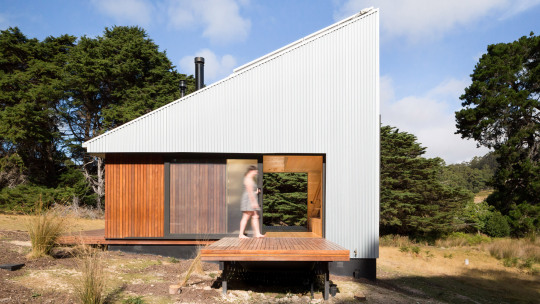
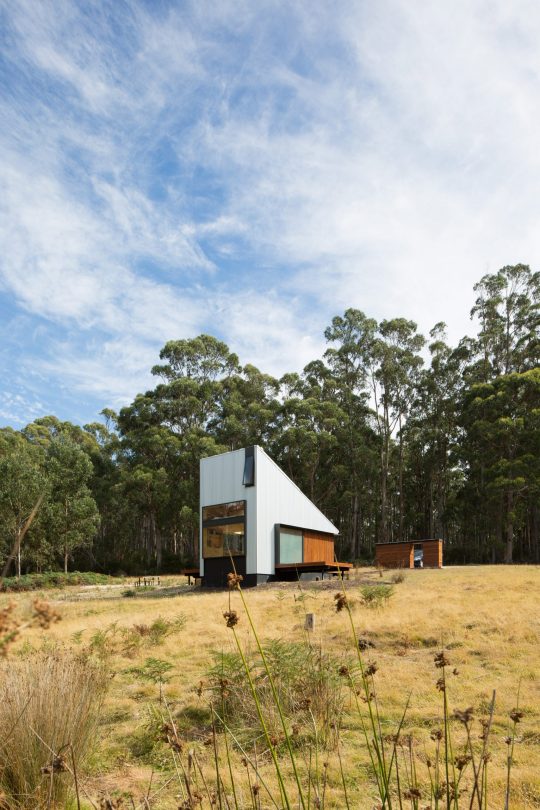


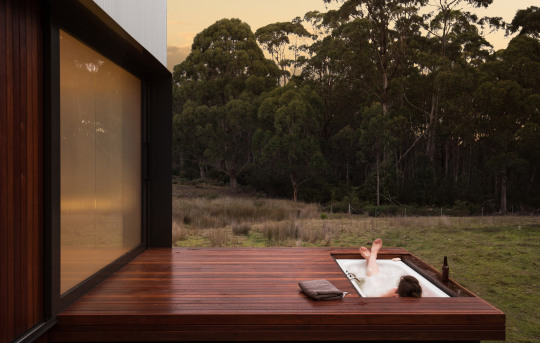

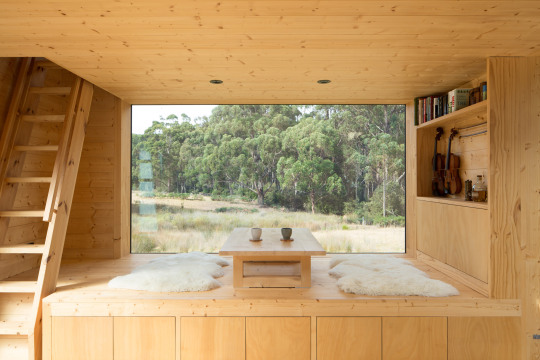
Bruny Island Cabin, Tasmania - Maguire & Devin
#Maguire & Devin#architecture#building#design#interiors#modern architecture#tiny house#home#cabin#retreat#countryside#landscape#nature#timber#sustainable#log burner#steel#australia#cool architecture#deck
268 notes
·
View notes
Text

This Middle Tennessee barn was standing before the beginning of the civil war. It was still standing a few months ago...
As I walked through it, touched the old timbers, lit it up, and photographed it... I thought about the countless animals and people that, over the decades, have been sheltered and protected by this barn.
It's possible, a civil war soldier took shelter in this barn... lonely, scared, and hungry... grateful for a roof over his head, and praying for strength, during a driving rain storm.
Without a doubt, it sheltered farm animals that helped sustain families through countless cold and bitter winters.
Young children probably played in this barn... petting horses and barn cats... and, sometimes, finding squirrles, oppossums, foxes, and racoons that had sought shelter from storms and cold nights.
Farmers probably sat on hay bales and discussed the uncertainties of crops and weather... under the certainty of a solid roof overhead.
This old barn was built to last. Built to shelter and comfort... and that's what it did for many years... even as it began to lean and sag.
After many decades, sadly, the time came that it had to be taken down. Factors of safety and economics left no other choice. It's time had past... even though it creaked and leaned... it's frame still stood strong. I'm told that it was much more difficult to pull down than was anticipated. The operators of the powerful machines used to take it down were amazed at how difficult it was to bring down. The barn, strongly, resisted the forces to bring it down... as it had for decades... but after providing years of service and shelter... it cracked and groaned...finally gave up... and laid down.
The way of life, exemplifeid by these old barns, is bravely hanging on as well. Sometimes by a thread. The open fields of green, the lush forests with singing birds and squirrles jumping through trees. Neigbors leaning on a fence and swapping stories. Kids playing in a creek. The songs of Quail and Whippoorwill. Rocking on a front porch while sipping home-made lemonade. LIghtning bugs lighting up an open field on a warm summer night while crickets chirp.
35 notes
·
View notes
Text
Building at great height requires a massive amount more material than a typical high-rise. The upper storeys of super- and megatall buildings – which often include hundreds of metres of unoccupiable ‘vanity’ height – are buffeted by ferocious wind loads, with any sway at all introducing enormous destabilising forces into the structure below. They are home to hefty services that raise water, coolant, people and air to great heights, and these heights must be offset by deep underground foundations. ‘If you’ve ever seen any Revit models [of London high-rises, there is pretty much as much concrete in those foundations as there is above ground,’ says Natasha Watson, an engineer at Buro Happold who leads the firm’s efforts to measure and reduce embodied carbon in its projects. Even in areas with firmer ground than London, Watson explains, the awe-inspiring physics of skyscrapers has a huge material cost.
In an industry that is chronically lacking in transparency around its ecological, social and labour impact, it is difficult to find good data on the carbon footprint of skyscrapers. But the assessments that are available bear out the physics. Watson and her colleagues’ modelling shows that the efficiency of structural material usage, by floor area, drops above just three storeys. According to a 2015 study commissioned by the CTBUH, the whole life emissions of both energy use and materials for a 120m concrete and steel structure are nearly five times higher than those of its 60m equivalent. Who knows what the cost becomes at 600m?
It is not yet possible to avoid this cost by using less ecologically destructive materials. Although some 100m-tall timber buildings are beginning to appear, they are nowhere near the 600m ‘megatall’ mark. According to Watson, finding a sufficient volume and quality of reused steel and concrete structural components for such a large, high-performance building would also likely be challenging.
Even at city level, the huge carbon cost of skyscrapers fails to outweigh any potential benefits that they might achieve from restraining urban sprawl. A study in npj Urban Sustainability in 2021 showed that the most carbon-efficient way for cities to grow is by developing densely built low-rise environments. The carbon cost of taller buildings is greater than carbon savings from restricted land use. This means that high-density low-rise cities such as Paris are more carbon-efficient than high-density high-rise cities such as New York.
225 notes
·
View notes
Text
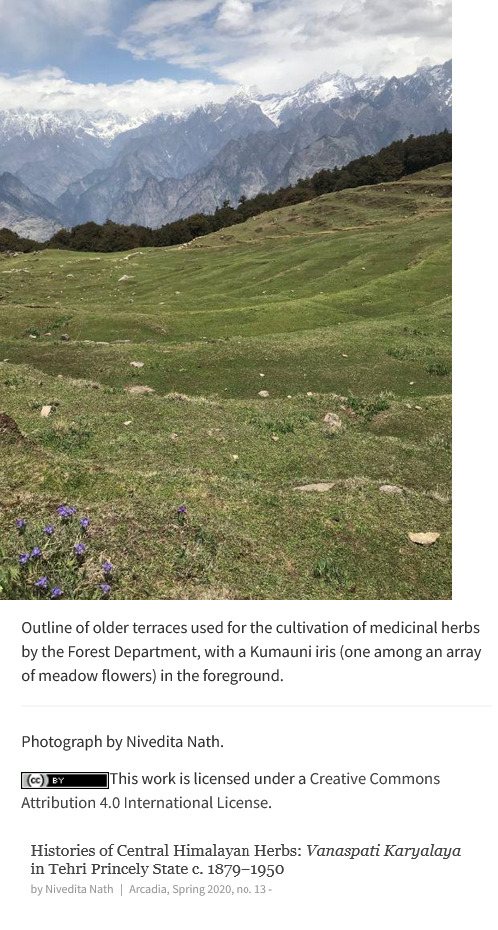
In the district of Garhwal in the Indian Himalayas, at 10,000 feet (3,048 meters) above sea level, forests of sycamore, chestnut, and rhododendron gradually give way to gently sloping grasslands.
Known locally as bugyals (from the Garhwali word bug for soft grasses), these meadows were the favored grazing grounds of communities of trans-Himalayan traders [...]. High-altitude meadows are home to musk deer, moonal pheasants, and a variety of flowers, grasses (such as the scented jambu), medicinal herbs, and roots (jadi butiyan). Garhwali villagers had long used the jadi butiyan of bugyals for household consumption and trade. Customary restrictions [...] made this usage sustainable.
The advent of [...] [colonial and institutional] forestry in the princely state of Tehri-Garhwal (the Tehri Durbar), together with the growth of an urban elite Hindu market for Ayurvedic potions, arguably transformed the social lives of Himalayan herbs. [...]
---
Works by upper-caste elites, such as the Maharaja of Gondal’s Aryan Medical Science (1895), claimed an exclusively “Hindu” provenance for the medicinal practices of Ayurveda. The nationalist reinvention of modern Ayurveda generated a market for medicinal herbs dominated by over a dozen firms by 1910. This emergent urban [...] bourgeois market for herbal medicines provides the context for the Tehri Durbar’s arguably unique project to commodify Himalayan herbs. Whereas the British government was reluctant to expand the plantation and manufacture of indigenous drugs, the Durbar established a separate department for the purpose, called the Vanaspati Karyalaya, that worked closely with the Forest Department.
Subordinated to the British government, the Tehri Durbar had begun contracting out vast swathes of pine and deodar forests to timber traders from the mid-nineteenth century onwards. In 1879 the Durbar’s Forest Department [...] restricted peasant access to common resources. Restrictions on the sale and collection of forest produce were put in place between 1878 and 1885, [...] precipitating numerous forest dhandaks (uprisings) as a consequence. Rules governing forest access changed in response to such protests and by 1930 prohibitions on the collection of and trade in medicinal herbs were lifted in certain areas.
The foundation of the Vanaspati Karyalaya prompted the systematization of the Forest Department’s initial efforts to monetize the collection of herbs through taxes, contracts, and tenders. By 1927 the department was working with the Karyalaya to carry out the sale of medicinal herbs, such as Gugal, Mashi, Atis, and Kawri, yielding an income of 18,294 rupees. [...] From the Durbar’s Annual Reports, [...] the Karyalaya’s preparation of Ayurvedic medicines seemed to have commanded “ready sale” primarily in the domestic market. Subsequently, therefore, the Forest Department focused on the overall sale and plantation of herbs while the Karyalaya specialized in the processing of herbs.
---
Anticipating an extension of markets “as demand for Himalayan medicines grows,” the Durbar charted a project of mass plantation to overcome the “expense and difficulty of searching for herbs of indigenous growth” that were “scattered among other herb plants and weeds.”
The bugyals of Garhwal were thus classified as “wastelands” from which “practically no income at present can be derived.”
This justified plans for the cultivation of aconites such as kut and atis on a projected area of 2,000 square miles (517,997 hectares) of alpine grassland. In the 1930s, the Durbar initiated the plantation of kut in the Ganga Bhillangana Forest Division, employing trained gardeners as well as “coolie” labor to transplant herbs from nurseries to enclosed meadows. Thus, bugyals hitherto controlled by villagers [...] were gradually being enclosed for herb plantations. The Karyalaya also opened a pharmaceutical works just outside the town of Rishikesh at Muni ki Reti [...]. Graduates of [...] colleges in Delhi and Calcutta [...] were hired for these operations. [...] [T]he Tehri Durbar’s move towards the mass plantation and processing of herbs risked dispossessi[on] [...] as well as eliding local knowledges related to jadi butiyan.
The story of the Vanaspati Karyalaya arguably suggests how complex cultural associations between the Himalayas and healing were becoming commodified.
---
Image, caption, and all text above by: Nivedita Nath. "Histories of Central Himalayan Herbs: Vanaspati Karyalaya in Tehri Princely State c. 1879-1950". Environment & Society Portal, Arcadia (Spring 2020), no. 13. Rachel Carson Center for Environment and Society. doi dot org/10.52982/rcc/9018 [Bold emphasis and some paragraph breaks/contractions added by me. Presented here for commentary, teaching, criticism purposes.]
134 notes
·
View notes